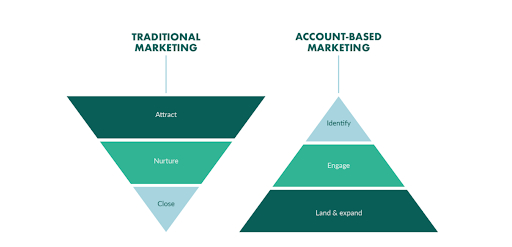The idea of Sales and Marketing working in synergy makes so much sense and should be so simple, yet many businesses struggle to streamline these efforts and see the team as one. Every time we open LinkedIn, there are Ads for super techy softwares or CRM platforms with fancy features that promise the integration of your sales and marketing efforts – but is it not simpler than this? All that is needed for the ‘smarketing’ efforts of your business to be a success is good communication and old school teamwork.
Truth is, the merging of marketing and sales isn’t just a good idea – it is proven to work. Ultimately, the goal of any business is to find, create and then keep a customer. You cannot do this without the efforts of both marketing and sales – and customer service too, of course.
Let’s have a think about how sales and marketing depend on each other.
Why sales need marketing
- Leads. Without leads, a sales department’s job is even more difficult and more often than not, salespeople depend on leads brought in by marketing to keep their pipeline fruitful.
- Discover new audiences. With the vast majority of marketing activity is done digitally now, the insight and data that this can provide businesses with is like never before. This informs all kinds of strategic business decisions and can often highlight new audiences that are engaging with marketing output. A new audience discovery means new, fresh leads to top the sales team’s pipeline right up!
- Nurture the pipeline / warm leads up. From a sales person’s perspective, the warmer the lead, the better. Marketing teams can turn prospects from a marketing qualified lead to a sales qualified lead, by delivering the right content to them on the right platform at the right time. This means, by the time leads come through to the sales team, they have been nurtured by marketing to push them along the sales funnel and land in the sales team’s lap when they have intent to buy. That is what sales dreams are made of.
Why marketing need sales
- Prospect pain points. For a marketer, there is nothing better than first-hand insight into the pain points and experiences of prospects. Who are the best people to provide those? Sales! A salesperson feeding back common objections they are faced with is absolute gold dust for marketing. It means they can focus their content, email and social media marketing on presenting how their brand can solve these pain points and boom – the leads are trickling in!
- Lead source feedback. When speaking with a prospect, it is always interesting to talk to them about why they enquired about your business specifically and how they found out about you. Salespeople feeding this information back to the marketing team enables them to track leads that data which may have otherwise not been allocated to their efforts. Not only this, but it provides insight into which marketing campaigns are performing well in terms of lead generation and which are not. This data is incredibly valuable when the marketing team is working on their strategy.
Is Account-Based Marketing the Answer?
Firstly, what is Account-Based Marketing (ABM)? ABM is a very focussed approach to marketing, specifically B2B, in which it is essential for both sales and marketing teams to work together in order to target best fit businesses and turn them into customers. 97% of marketers say that ABM offers a higher ROI than alternative marketing activities (Forbes).
(SuperOffice, 2020)
A sales person’s role in ABM is to identify ‘x’ amount of perfect fit prospects – the business that fit the brand’s persona to a tee and would make the ideal client.
It is then over to the marketing team to create and deliver a number of different touchpoints to these contacts, making their brand stand out from competitors and highlighting the need for their product or service. This can, sometimes, be a joint effort between sales and marketing, but generally speaking, the nurturing campaign and creation of assets will sit with the marketing team, even if the salespeople are the ones to press ‘go’.
Once the ABM nurture cycle has begun (essentially, this is the marketing plan warming up the leads more and more through each interaction), it is down to the salespeople to close any deals once interest is expressed from the chosen, perfect fit prospects.
So truly, the ABM approach is super simple – not in terms of workload necessarily – but in practice. Opposed to more old school marketing methods where you try to reach as many potential customers as possible and hope something sticks, you work with the sales team to highlight a select few prospects who would be a perfect fit for your business and really hone in on the personalisation and quality of the marketing that is delivered to them.
It is unrealistic to transform all of the marketing your business does into the ABM model – too timely and costly for starters. But a fantastic way to encourage your sales and marketing teams to integrate more is to set them up an ABM project. We guarantee it will help develop the ‘smarketing’ thinking and also deliver fantastic commercial results.
Conclusion
What are you waiting for? Your Sales and Marketing teams need to turn into the Patrick and SpongeBob of your business, opposed to the Tom and Jerry. They need each other and that feedback loop between the two is absolutely essential if the business is going to achieve its full potential. Highlighting their shared goals, having regular meetings with both departments and working on Account-Based Marketing projects are our three key pieces of advice when it comes to nailing this process.
Do you have success in merging the efforts of your sales and marketing teams? If so, we would love to hear how!


